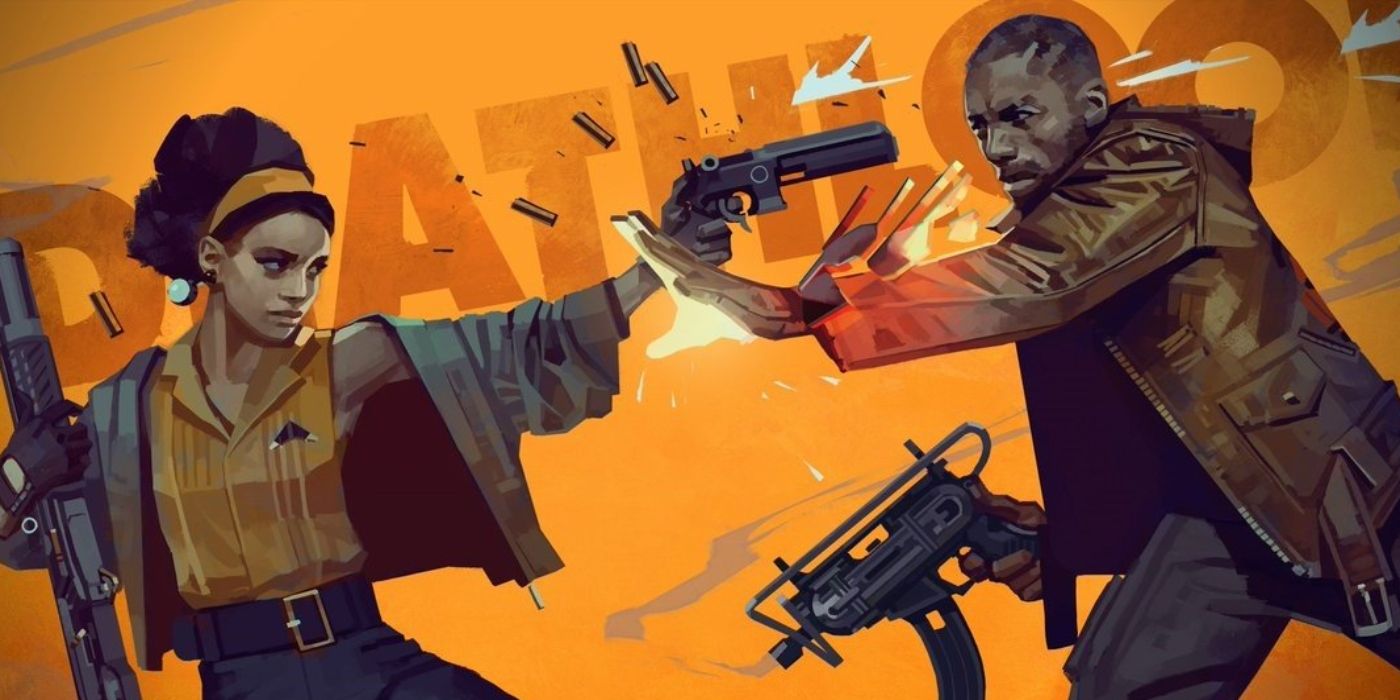Deathloop is Arkane Studios' upcoming shooter set on an island stuck in a perpetual 24-hour time loop as the protagonist, Colt, attempts to take down his eight targets in a single day to break free. The gameplay resembles Dishonored, with Colt able to use traditional weaponry alongside abilities which resemble Corvo and Emily’s magical abilities, likely with a sci-fi explanation.
Deathloop’s premise, however, creates some opportunities for Arkane to engineer an experience that resembles Dishonored in its stealth and combat but also encouraging the most enjoyable parts of the game without penalizing them. Not only that, but Deathloop appears to use one of Dishonored’s most interesting mechanics, with a twist.
Dishonored's Two Main Playstyles
One of the most exciting things about Deathloop is that it overcomes Dishonored’s Chaos problem. In Dishonored, killing too many people creates a state of High Chaos which gives the player the game’s “bad ending.” The ultimately makes the games less enjoyable because it means that in order to get the good ending players can’t use their combat abilities, which are among the game’s most fun mechanics.
Deathloop avoids this entirely – Colt always has to kill his eight targets, and every failed run causes the timeloop to restart, bringing everybody back to life. In other words, Deathloop will encourage players to use all the tools at their disposal, without risk of being punished in the story. This might be offputting for players who enjoy the intrigue and pace of a non-lethal Dishonored run. However, Deathloop has a way to please those fans as well.
Dishonored gave players two main ways to deal with targets, with little room for overlap. Players can kill their targets however they like, or they can pursue a non-lethal option which involves more stealth and completing several side objectives. For example, in the original Dishonored’s mission “House of Pleasure,” the player must eliminate Custis and Morgan Pendleton.
Killing the Pendletons is straight forward enough – Morgan can be eliminated by turning up the heat in his steam room until the pipes burst, while Custis can be assassinated in the smoking room. However, the player also has the option to complete a Dishonored side-mission for a man named Slackjaw which involves discovering a safe combination for him. In turn, he orchestrates the kidnapping of the Pendletons, who will then be forced to work in their own silver mines.
Deathloop's Synthesis
The Deathloop “Two Birds One Stone” trailer shows how Arkane’s new game synthesizes the two main types of playthrough in Dishonored. In it, players are forced to choose between a violent playthrough that comes with the ability to fully enjoy the game’s combat system, or the non-lethal route which involves far more story and intrigue.
In the Deathloop trailer, Colt explains how he can’t eliminate all eight of his targets in a single day by approaching them one by one. Instead, he demonstrates how he can manipulate them into being in the same place at the same time by learning aspects of their lives. In this case, he stops a scientist from blowing off an invitation to a party because of a major breakthrough in his research by sabotaging that research, allowing him to take out both the scientist and the host of the party that evening.
While non-violence is out of the question in Deathloop, the game appears to synthesize the combat and story-driven approaches in Dishonored into a single playthrough, giving players opportunities to explore the world and manipulate its inhabitants without stopping them from enjoying fast-paced combat or making full use of their abilities. If Arkane is able to pull it off, this could help Deathloop take the best parts from Dishonored 1 and Dishonored 2 while avoiding their downsides.
Deathloop is set to release May 21st, 2021 for PC and PS5.



